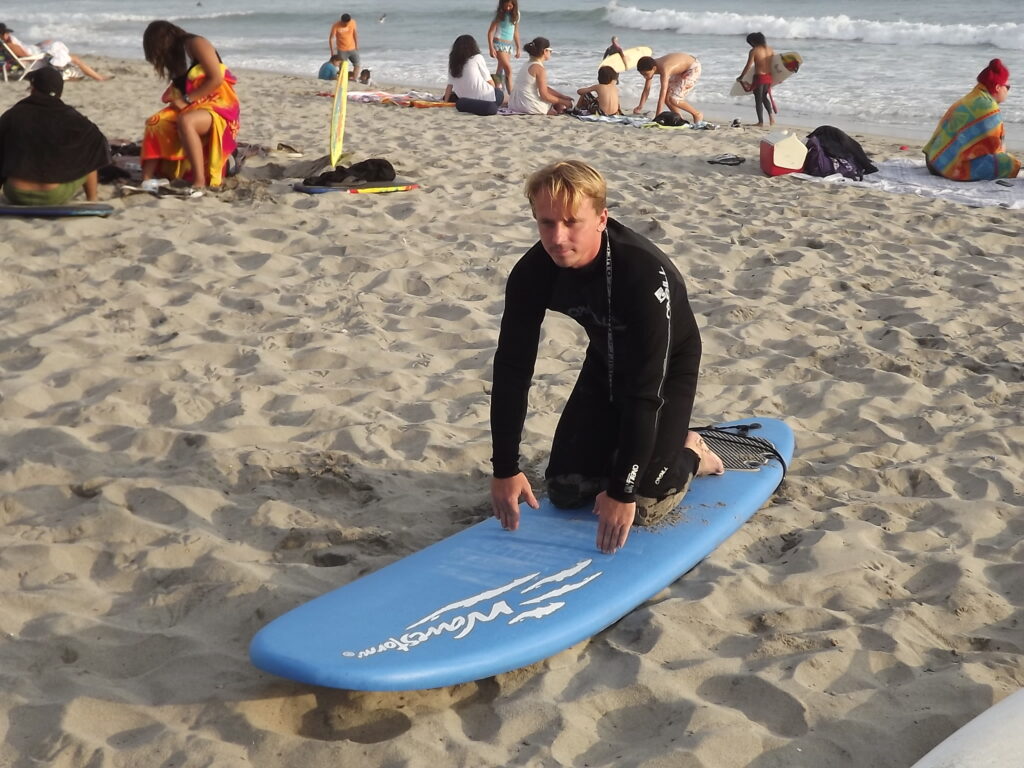Learn Surfing with Big Boards and Foam Waves
Learn surfing with foam waves and big boards to make a difficult sport to learn easier. I was included among most new students who say surfing is the most difficult sport they have encountered.

Why is it difficult? There are several elements. It tests your physical abilities in flexibility, strength and stamina. The surf board is designed for the right technique and posture. Timing is extremely important in the techniques. There is little tolerance by the board or the sea for error.
The proper physical preparation, learning the right techniques and using a high volume board to execute the techniques makes the process easier. First you should have the flexibility to touch your fingers to the floor. You need to be loose in your hamstrings, buttocks and lower back.
Doing push ups is a good test and practice for executing the pop up. The pop up is like a burpee where you push up, bring your knees under your chest and then pop to a stance. Like yoga in the down dog position, practice bringing your knees under your chest to reach your arms.
The Surf Board
Higher volume boards like 8′ or 9′ soft tops wont hurt you if they hit you, paddle easier to catch waves, and are more stable for pop ups and riding. You could ride an 8′ Wave Storm for a long time and in real waves as well.
The process of getting shorter should be 6″ at a time while maintaining width and thickness of the bigger boards. Moving to longer boards is easy. The first good hard board would be a 7’6″ fun board that is 21″+ and at least 2 3/4″ thick.
The Waves
Foam waves are real waves that have broken and are rushing to shore. They are easier to catch because there is a big window between spotting the wave and paddling before it hits the surfboard. Then the board goes level to the beach.
A real wave has only a few seconds of opening when you can catch it and the board is going down hill first. Timing has to be perfect and then you have to avoid pearling. To ride the wave, you need a bottom turn to get into the pocket or beginners can just let the wave crash and ride the wave.
The Techniques
There are three main aspects to riding a foam wave. Anticipate the wave and paddle in front of it toward the beach to get momentum. A few seconds before it hits the board and for at least three strokes afterward, paddle hard to get in front of the wave. Do not pop up on impact.
The best pop up for beginners is placing the hands on the board in a man’s push up position after paddling to the front of the wave. Place the back foot on the board, then raise the hands and torso to make the front foot more weightless and place it in the Middle of the board close enough to the front to keep the nose down while riding.
When you rise to the feet, have both hands in front of you and shoulders and hips squared to the front. If your butt is over one of the sides (rails) you will fall off the back. If your head is over one rail, you will pitch off on that side.
If your posture and foot position are correct on the board, the board will go straight without much work.
The Perfect Start to Lose Weight and Get Fit
Free E-Book
You Have to Get Started to Find Your Happiness. Quick Start to Change your Lifestyle
See Surf Packages and PerfectBody.me meal plans.
